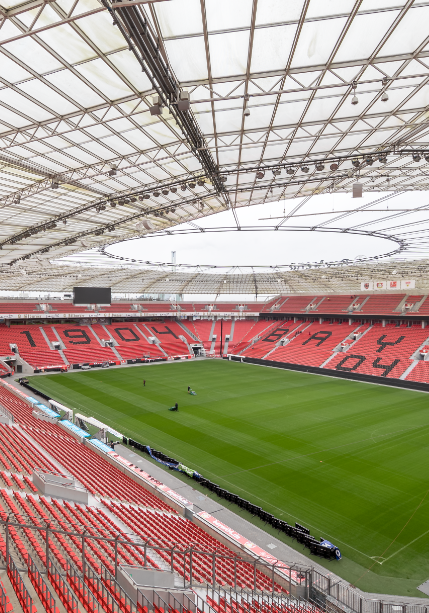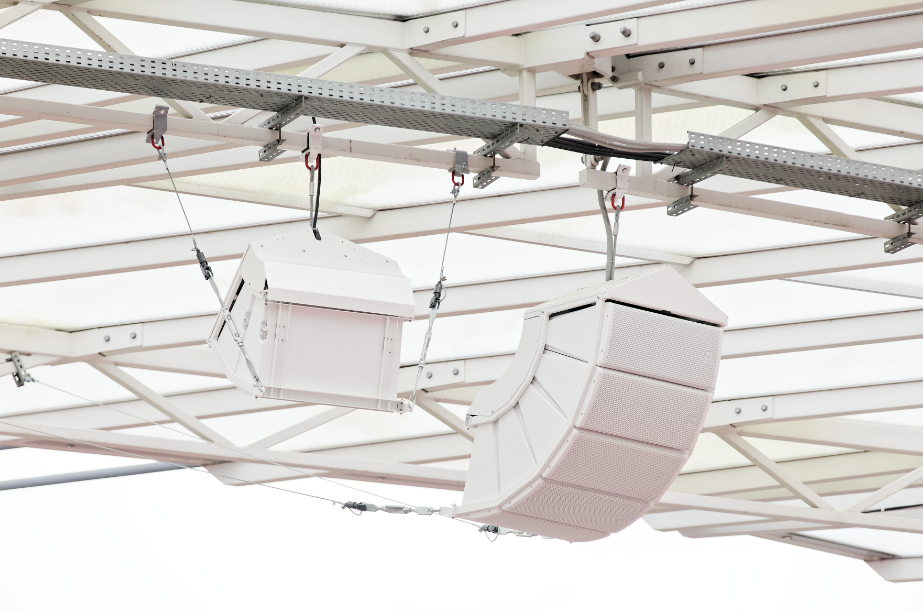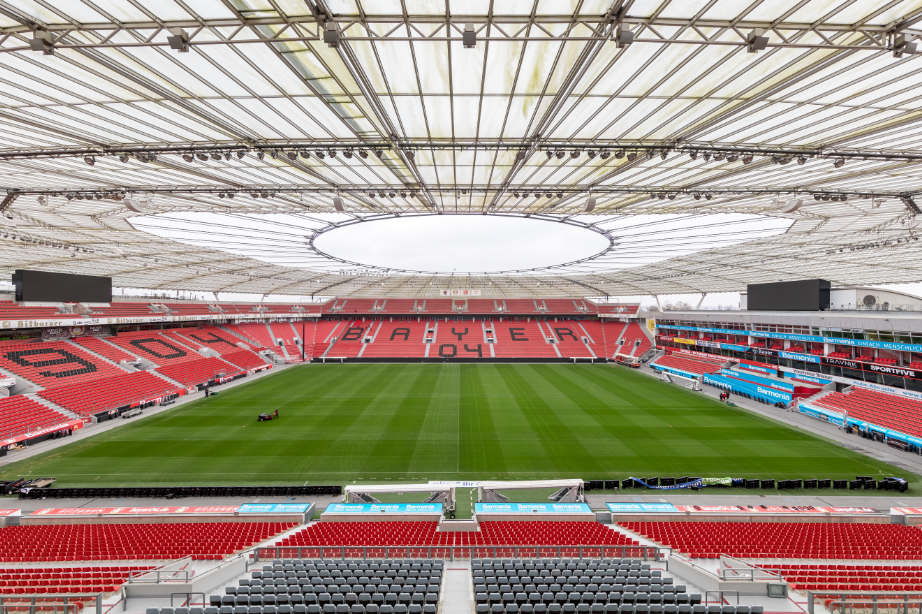With a capacity of over 30,000, the BayArena is the definition of a modern sports venue. Home of Bayer 04 Leverkusen, one of Germany’s leading professional football clubs, the stadium is noteworthy for spectator proximity to the on-field action. First opened in 1958, it has undergone successive redevelopments, and was most recently remodelled during 2008 and 2009, when it was expanded to its current capacity and added its unique nest-like roof structure. Over the years the club has always looked towards innovative and sustainable solutions when it comes to stadium technology, and one of its most recent advances was to replace its existing audio provision with the installation of a CODA Audio sound system…
The project was the responsibility of TecArena Plus, a wholly-owned subsidiary of Bayer 04 Leverkusen Fussball GmbH. TecArena is the club’s technical service provider and is responsible for facility management, construction and project management, as well as Green-keeping. Its managing director Felix Duden, describes the brief:
“Our objective when renewing the sound reinforcement system was to significantly improve the electro-acoustic sound situation in the stadium with a high-quality, attractively priced solution.”
A nationwide tender process followed, with representatives of several suppliers invited to the stadium to gain an impression of the prevailing conditions. Tech group Wilhelm & Willhalm of Aschheim, a distributor partner of CODA Audio, emerged as the winner, having worked closely with the loudspeaker manufacturer’s tech support team on a suitable concept.





